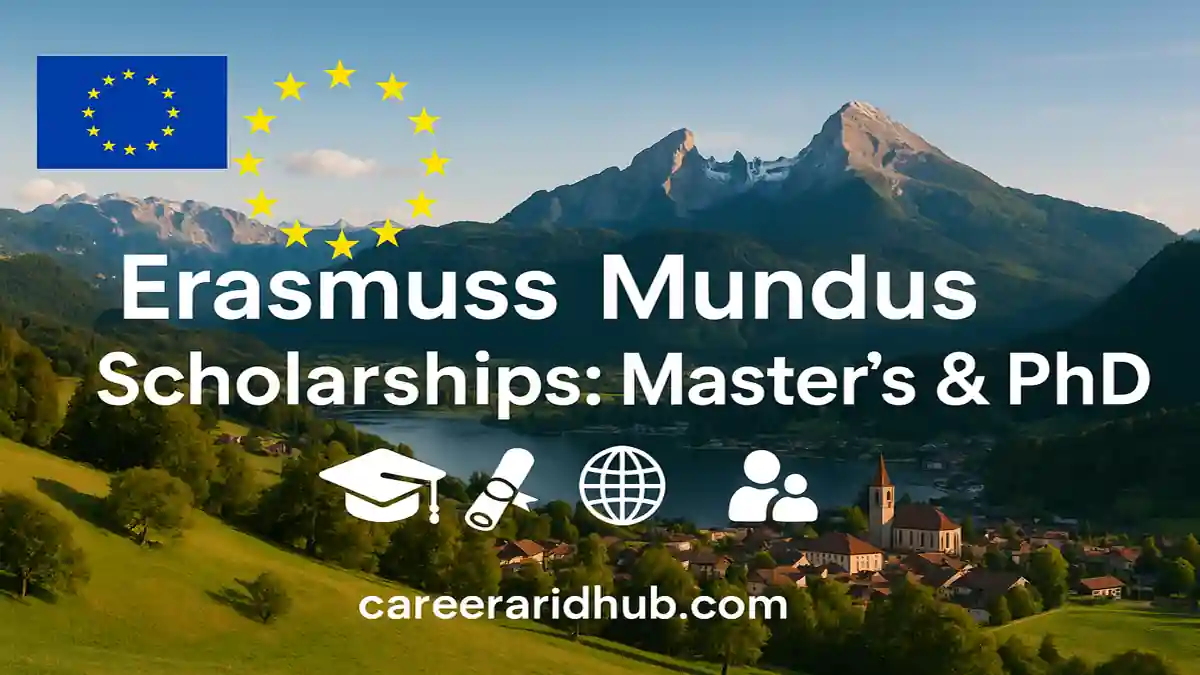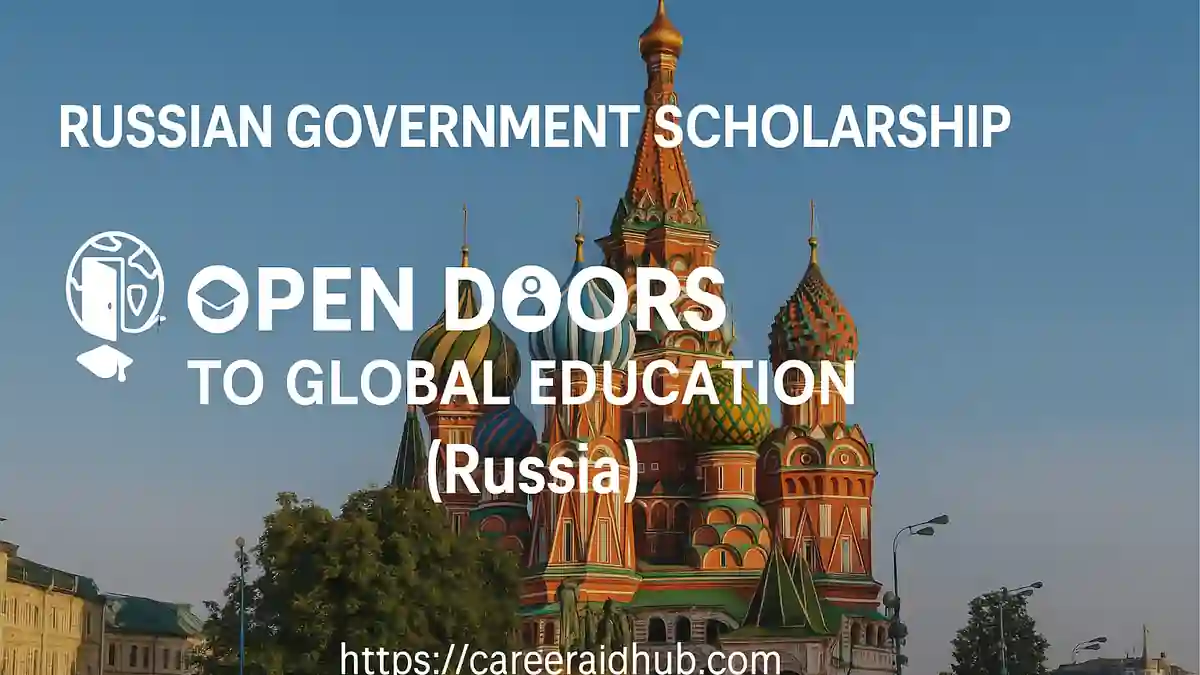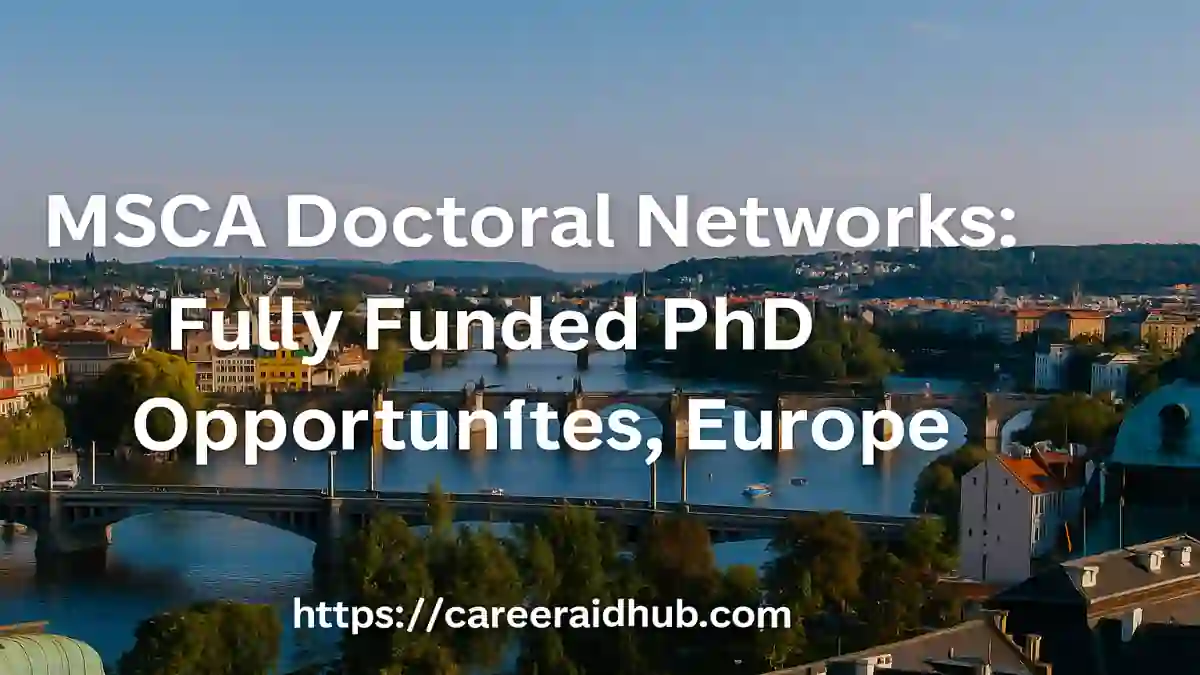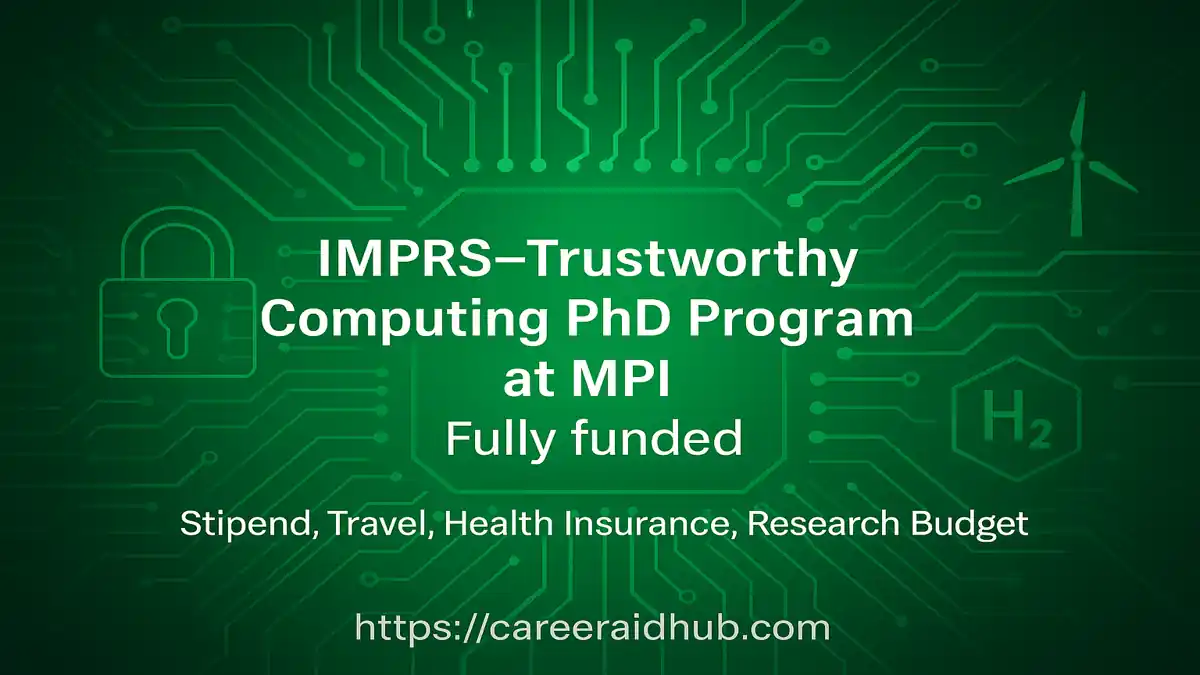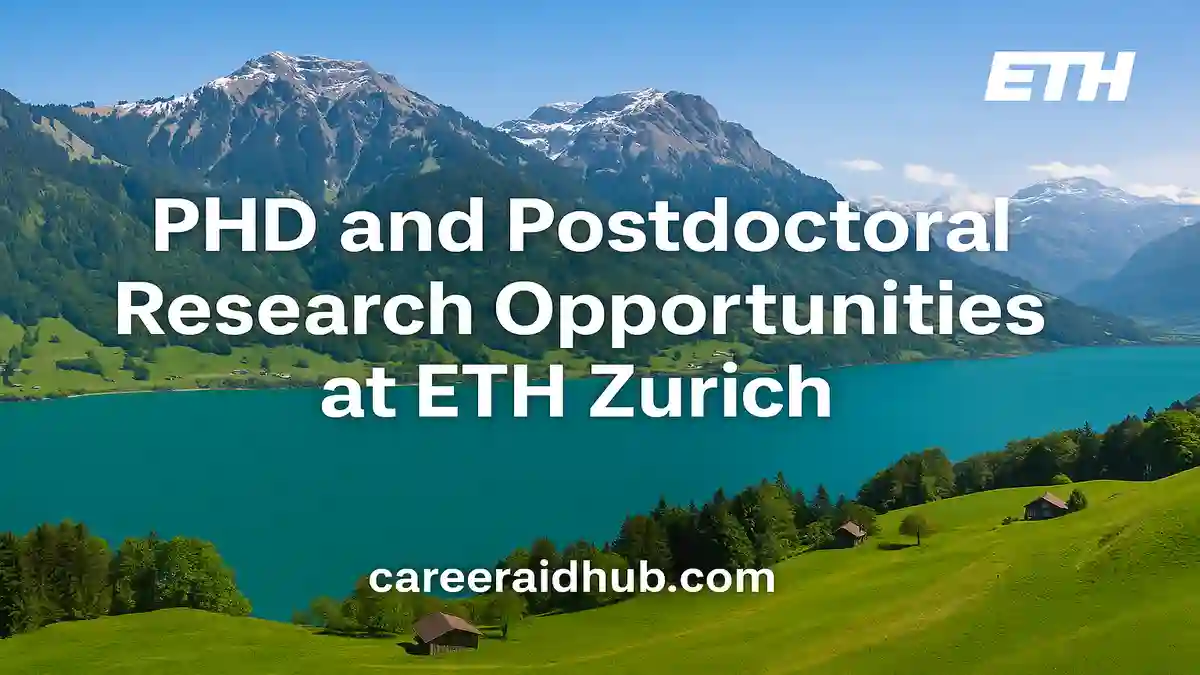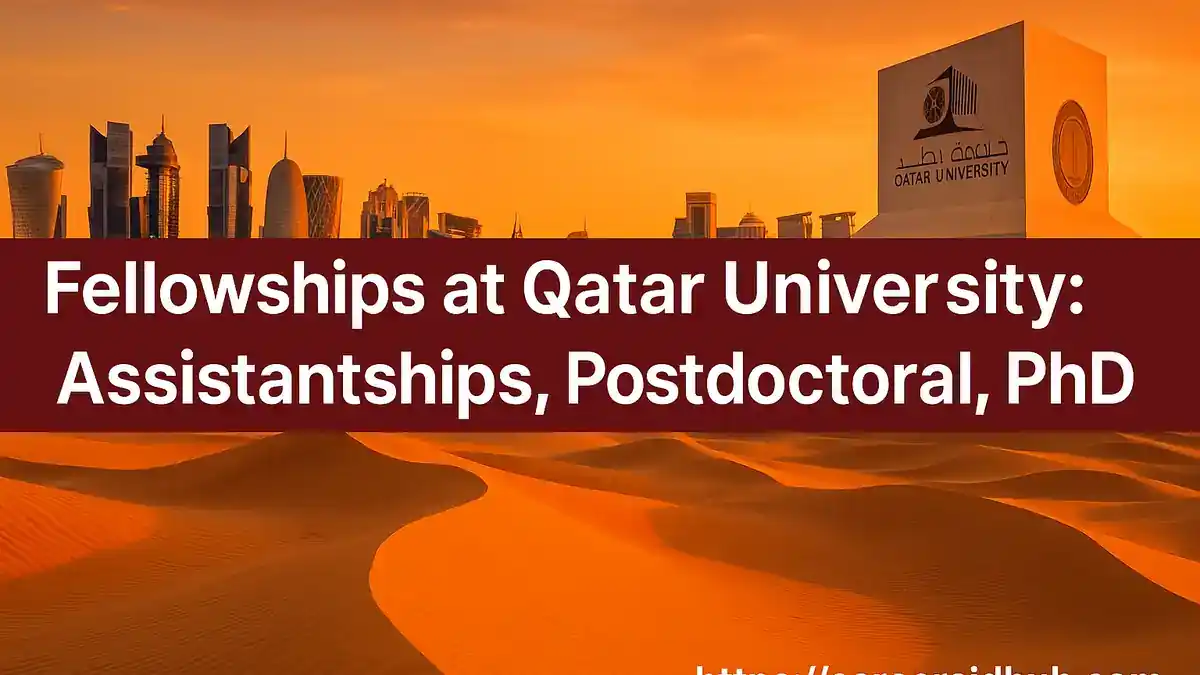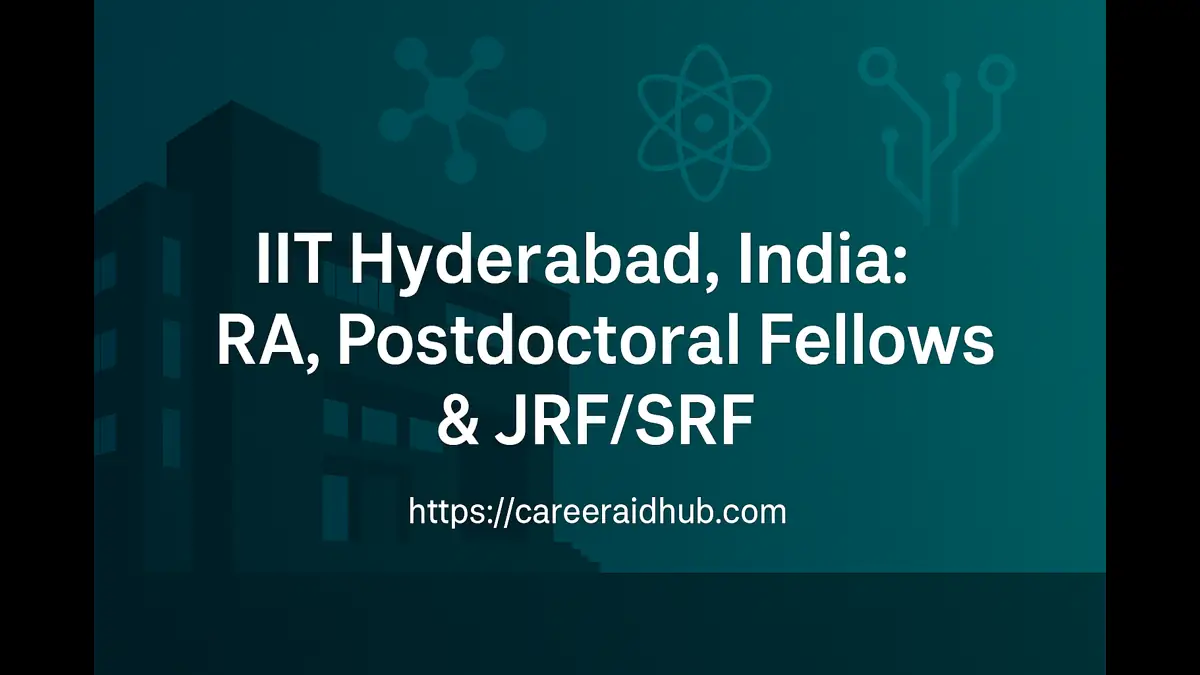What “Erasmus Mundus” Covers (and What It Doesn’t)
Erasmus Mundus refers to Erasmus Mundus Joint Masters (EMJM)—international, curriculum-integrated master’s programmes delivered by consortia of universities in at least two countries. You apply directly to the programme, and the consortium evaluates and awards scholarships; there is no central EU application by candidates. EMJM cohorts follow a predefined mobility path, ensuring students study in multiple countries and earn a joint, double, or multiple degree.
Erasmus Mundus Joint Masters deliver fully integrated, multi-country study with competitive scholarships administered by each consortium. Meanwhile, doctorate seekers should target MSCA Doctoral Networks for paid, structured PhD training across sectors. This guide clarifies coverage, eligibility, timelines, selection, and application strategy—so you can plan confidently from shortlist to submission.
By contrast, Erasmus Mundus does not fund a dedicated PhD scholarship track. If your goal is a doctorate with international mobility, a cohort model, and industry exposure, the closest EU framework is the Marie Skłodowska-Curie Actions (MSCA) Doctoral Networks. These are research employment contracts offered by funded networks, not taught scholarships.
Why this distinction matters
-
- It shapes where and how you apply: EMJM via programme portals; MSCA DN via job-style vacancy posts.
- It determines funding form: scholarship (EMJM) versus salary and
allowances (MSCA DN).
- It guides document strategy: EMJM emphasises academic fit and mobility readiness; DN prioritises research employability and host-project alignment.
What an EMJM Scholarship Typically Includes
-
- Tuition/participation costs: Programmes may cover full tuition and participation fees; specific coverage varies by consortium.
- Monthly contribution toward living costs: The amount and duration differ by programme and mobility path.
- Travel/installation support and insurance: Where applicable, consortia may add travel or installation contributions, plus insurance.
Important: Each consortium defines its own package, quotas, and rules. Therefore, always confirm coverage, eligible nationalities, mobility requirements, and documentation standards on the programme’s official call page.
Reading programme pages effectively
Break down the information into: (i) eligibility (degrees, grades, language proofs), (ii) selection (weights for academics, motivation, references), (iii) scholarship specifics (amounts, months covered, travel), and (iv) mobility route (which universities and in what order).
2025 Intake: Timelines & Where to Find Programmes
-
- Deadlines are programme-specific. Many EMJMs open applications between October–January, with typical scholarship deadlines in December–February. A few run later self-funded or reserve rounds.
- Where to search: Use the official Erasmus Mundus course catalogue to filter by field, mobility path, and host institutions. Then apply on each consortium’s website.
Planning buffers that help
justify;">Start
12–16 weeks before your earliest deadline. This window accommodates language tests, certified translations, supervisor references, and e-signature delays on transcripts.
Who Can Apply
-
- Nationality: EMJM scholarships are open worldwide; many consortia offer a single merit list irrespective of nationality, while others separate global and regional quotas.
- Academic background: A completed bachelor’s degree (or recognised equivalent) in a relevant area is standard. Some programmes allow final-year applicants who will graduate before enrolment.
- Language: Requirements vary—IELTS/TOEFL or other proofs may apply. Some consortia accept institutional tests or medium-of-instruction letters; verify exact rules on the programme page.
Competitive profile cues
Strong candidates present clear thematic fit, method skills (e.g., data, lab, policy analysis), and evidence of independent work—capstones, theses, internships, or open-source contributions.
How the Selection Works (Typical Flow)
-
- Choose programmes aligned to your background and future pathway. You may apply to several EMJMs.
- Submit online to each consortium: transcripts, degree proof or expected graduation letter, language proof, CV, references, and a purpose statement or research-motivated essay as required.
- Consortium ranking & scholarship offer: Panels score dossiers against published criteria. If selected, your offer sets out scholarship terms and the mandated multi-country mobility.
Common scoring elements
-
- Academic
merit: grades, rigour of prior programme, research output.
- Motivation and fit: alignment with modules, labs, and mobility path.
- References: credibility and specificity of referee comments.
- Diversity/objectives: some consortia consider cohort balance and regional priorities.
Practical Tips to Strengthen Your EMJM Application
-
- Targeted fit: Map your experience to named modules and labs. Use the same terminology judiciously to make alignment obvious without over-repetition.
- Evidence first: Lead with graded coursework, project abstracts, portfolios, or Git repositories. Summarise outcomes succinctly—methods, findings, and your role.
- Mobility readiness: Address visas, relocation, and multi-site study logistics. Demonstrate adaptability and any prior international exposure.
- Referees who add value: Pick two supervisors or employers who can attest to independent problem-solving and teamwork. Provide them with your CV and a one-page brief of your targets.
Document presentation
Convert all uploads to searchable (OCR) PDFs, title files consistently, and follow naming conventions. Check that scans are legible and in the requested order.
Costs Without a Scholarship
If you are not awarded a scholarship, many EMJMs allow self-funded admission for strong candidates, sometimes with fee waivers or local bursaries. Examine the consortium’s finance page for partial awards, payment schedules, and
living-cost guidance per country.
Budgeting realistically
Plan tuition plus 12–18 months of living costs across two or more countries. Include visa, travel, and insurance. Where available, explore city-level transport discounts and student housing.
PhD Pathways: MSCA Doctoral Networks (What to Know)
If you seek a doctorate with structured international training, consider MSCA Doctoral Networks (DN) under Horizon Europe. These networks employ PhD candidates on paid research contracts, typically 36 months, delivering advanced training, cohort activities, and secondments across academic and non-academic partners.
How applications differ from EMJM
-
- You apply to individual DN projects when positions are advertised (consortium portals, Euraxess, or university job boards).
- Selection resembles job hiring: shortlisting, interviews, and sometimes technical tasks or presentations.
- Funding is an employment contract: a living allowance plus mobility and, where relevant, family/long-term leave allowances.
What evaluators look for
Hosts value research preparedness, fit to the work package, and the ability to collaborate across sites and sectors. A concise proposal sketch aligned to the DN’s objectives can help.
Quick Comparison
|
Feature
|
Erasmus Mundus Joint Masters (EMJM)
|
PhD via MSCA Doctoral Networks
|
|
Level
|
Master’s (60/90/120 ECTS)
|
Doctorate (employment contracts)
|
|
Funder
|
Erasmus+ (Education & Culture)
|
Horizon Europe (Research & Innovation)
|
|
How to apply
|
Directly to each EMJM consortium
|
Apply to specific DN PhD vacancies
|
|
Funding form
|
Scholarship (tuition + monthly + travel)
|
Salary + allowances under MSCA rules
|
|
Mobility
|
Study in ≥2 countries/universities
|
Research training + secondments
|
|
Catalogue/info
|
EMJM course catalogue (programme pages)
|
DN calls on host portals/Euraxess
|
Using the table
Choose EMJM if you need taught master’s study with multi-country mobility. Choose MSCA DN if you are ready for research employment and structured doctoral training.
Action Plan (Master’s & PhD)
For Master’s (EMJM)
-
- Shortlist 3–5 EMJMs from the official catalogue; record deadlines, language proofs, and document formats.
- Draft one tailored statement per programme linking prior work to modules, labs, and mobility.
- Secure referees early; give them precise prompts and timelines.
- Organise formalities: language tests, certified translations, and notarised copies as required.
For PhD (MSCA DN)
-
- Track active Doctoral Networks and sign up for lab or department alerts.
- Prepare a research-focused CV and a 1–2 page proposal sketch aligned to DN work packages.
- Pre-validate eligibility: degree equivalence, mobility rules, and any host-country requirements.
Good to Know for the 2025 Cycle
-
- New EMJM projects appear annually, and consortia publish their own scholarship counts and application windows. Expect fresh listings across late summer and autumn before the next admission wave.
- Programme-level variation is normal. Some EMJMs pause scholarships for a given intake while offering self-funded seats. Therefore, always consult the current programme page for definitive terms.
Suggested review timelines
Update your shortlist and document set every 6–8 weeks during peak season. Re-check mobility routes, fee tables, and language proofs before final submission.
Feature — At a Glance
|
Feature
|
Details
|
|
Program Name
|
Erasmus Mundus Joint Masters (EMJM); MSCA Doctoral Networks (DN)
|
|
Host Country
|
Multiple countries across the European Higher Education Area (multi-country mobility)
|
|
Funded By
|
European Union (Erasmus+ for EMJM; Horizon Europe for MSCA DN)
|
|
Duration
|
EMJM: typically 12–24 months; MSCA DN: employment contracts commonly around 36 months
|
|
Study Mode
|
EMJM: Full-time, multi-site taught programmes; MSCA DN: Full-time research employment with secondments
|
|
Eligibility
|
EMJM: bachelor’s or equivalent; MSCA DN: master’s or equivalent meeting project rules; language and mobility conditions apply
|
|
Financial Support
|
EMJM: scholarship covering tuition, monthly contribution, travel/installation where applicable; MSCA DN: salary plus mobility and, where eligible, family/leave allowances
|
|
Fields of Study
|
Wide range across STEM, social sciences, arts, and interdisciplinary areas (programme-specific)
|
|
Deadline
|
Programme/consortium-specific; typical scholarship windows fall between Oct–Feb
|
|
Official Website
|
See Reference section (official EU pages)
|
Next cycle outlook (predicted months): Scholarship calls often peak October–February for EMJM; DN postings appear throughout the year with clusters around spring and autumn—we will update soon.
Conclusion
Erasmus Mundus Joint Masters provide multi-country, high-quality master’s study with merit-based scholarships administered by each consortium; meanwhile, doctoral candidates should target MSCA Doctoral Networks for salaried, cohort-based research training. Because each programme or network sets its own rules, always verify deadlines, coverage, and documentation on the official EU pages before you apply.
References (Official)
- Erasmus Mundus Joint Masters (students) — European Commission: https://erasmus-plus.ec.europa.eu/opportunities/opportunities-for-individuals/students/erasmus-mundus-joint-masters
- MSCA Doctoral Networks — European Commission: https://marie-sklodowska-curie-actions.ec.europa.eu/actions/doctoral-networks
Frequently Asked Questions (FAQs)
What is an Erasmus Mundus Joint Masters scholarship and how does it work? It funds integrated multi-country master’s programmes. You apply directly to each consortium, which selects candidates and awards scholarships.
Is there an Erasmus Mundus scholarship for PhD studies? No. For doctoral funding with international mobility, apply to Marie Skłodowska-Curie Actions (MSCA) Doctoral Networks instead.
Who is eligible to apply for Erasmus Mundus Joint Masters scholarships? Graduates with a relevant bachelor’s degree can apply worldwide. However, programmes set additional academic, language, and document requirements.
When do Erasmus Mundus applications and scholarship deadlines usually open? Most programmes open in autumn and close by winter. Nevertheless, exact windows vary by consortium; always check the programme page.
What costs do Erasmus Mundus scholarships typically cover? They usually cover tuition, a monthly contribution, and, in some cases, travel or insurance. However, coverage differs by programme.
Can I apply to multiple Erasmus Mundus programmes at the same time? Yes. Moreover, applying to several aligned programmes improves your chances if you tailor documents to each consortium.
What documents do Erasmus Mundus applications generally require? Typically, transcripts, degree proof, language test scores, CV, recommendations, and a motivation statement. Additionally, some programmes request portfolios or project abstracts.
How competitive are Erasmus Mundus scholarships for international students? They are highly competitive. Therefore, demonstrate precise programme fit, strong academics, relevant experience, and clear mobility readiness.
How do MSCA Doctoral Networks recruit PhD candidates internationally? Networks publish funded PhD vacancies. You apply to specific positions; then committees shortlist, interview, and issue employment offers.
What funding do MSCA Doctoral Networks provide to PhD candidates? They provide employment contracts with a living allowance, mobility allowance, and sometimes family or long-term leave allowances, depending on eligibility.
Premium Mentorship for a Stronger Application
- Premium Mentorship: personalised 1:1 guidance for this and similar opportunities
- In-depth review of your CV, academic profile, and key statements
- Aligned with international selection criteria so your profile matches what panels expect
- Stronger, more compelling narrative for highly competitive calls
- Step-by-step support from opportunity mapping to final submission (fee-based)
Subscribe Premium Mentorship

